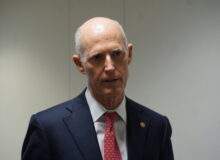(Official Washington Examiner editorial, Jan. 3) Recent admissions from an insider about former President Donald Trump’s challenge to last year’s election results should impel lawmakers of both parties to revise the convoluted Electoral Count Act that governed the proceedings.
Peter Navarro, Trump’s trade adviser, wrote in a memoir that he and Trump strategist Steve Bannon had a plan to halt Congress’s certification of election results last Jan. 6 — a plan that actually was hurt, he said, not helped, by the riot that engulfed the U.S. Capitol. The idea was to exploit loopholes in the Electoral Count Act to ramp up pressure on Vice President Mike Pence, while giving Pence a flimsy excuse to reject results from six states.
“By law [in the ECA], both the House of Representatives and the Senate must spend up to two hours of debate per state on each requested challenge,” Navarro wrote. “For the six battleground states, that would add up to as much as twenty-four hours of nationally televised hearings across the two chambers of Congress.”
If the hearings ginned up enough public pressure on Pence, the logic went, Pence would (to quote a news summary) “send the electoral votes back to six contested states, where Republican-led legislatures could try to overturn the results.”
It has long been known that this was Navarro’s goal, but the report on his intended mechanism is new. Trump’s team first wanted to use some of the ECA’s unwieldy procedures to create confusion about which electoral votes were legitimate and then to use other ECA provisions — its in-Congress challenge rules — to “run out the clock” on Congress’s ability to make the results official.

Specifically, one portion of the ECA refers to legislative and judicial determination of a state’s electors, while another makes official the ultimate certification by each state’s governor. Then, yet another portion can be wrongly interpreted to give Congress leeway to decide anew whether the certifications pass muster, while at one point requiring the House and Senate to deliberate separately and at another point saying “the two Houses concurrently may reject the vote or votes.”
It all appears self-contradictory, and it’s all written with odd sentence structures and double- and triple-negatives. No wonder it could create confusion…. [The full editorial is here.]






